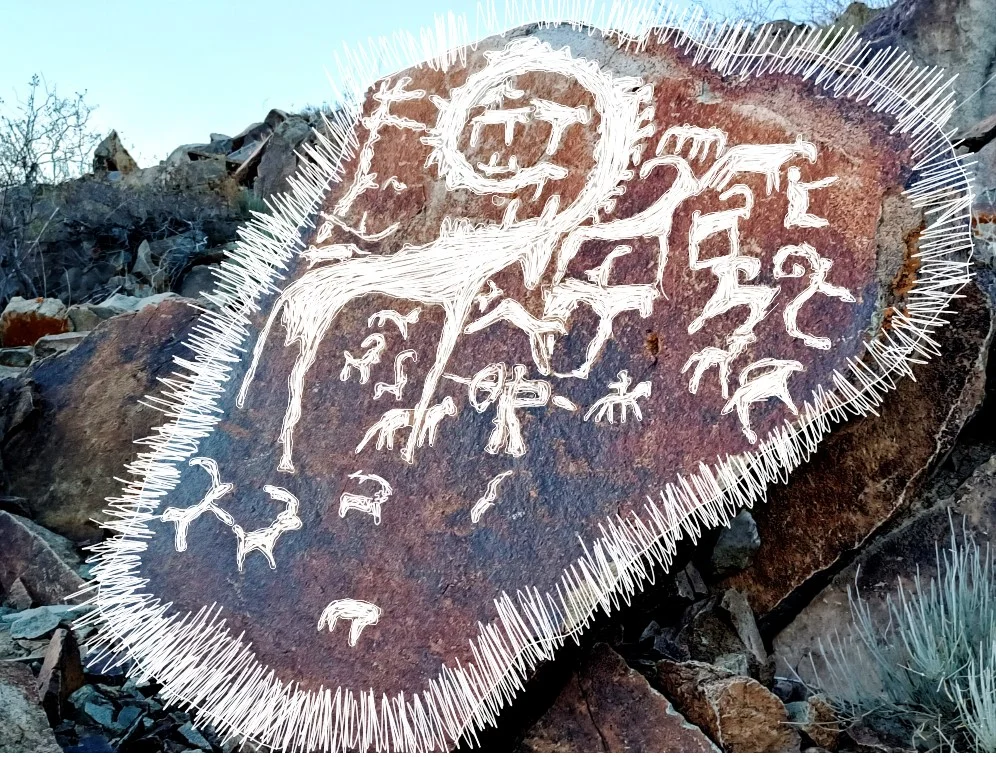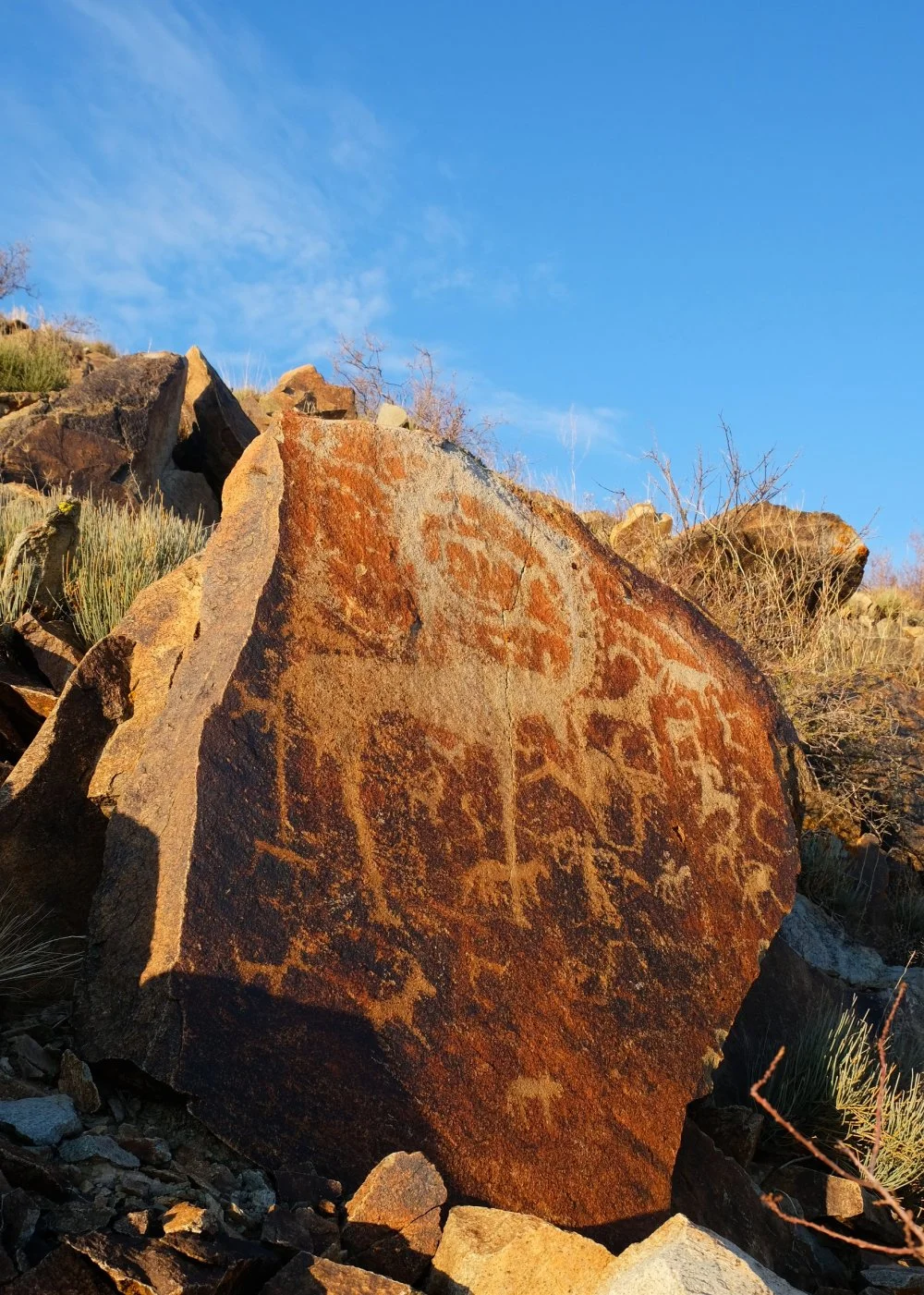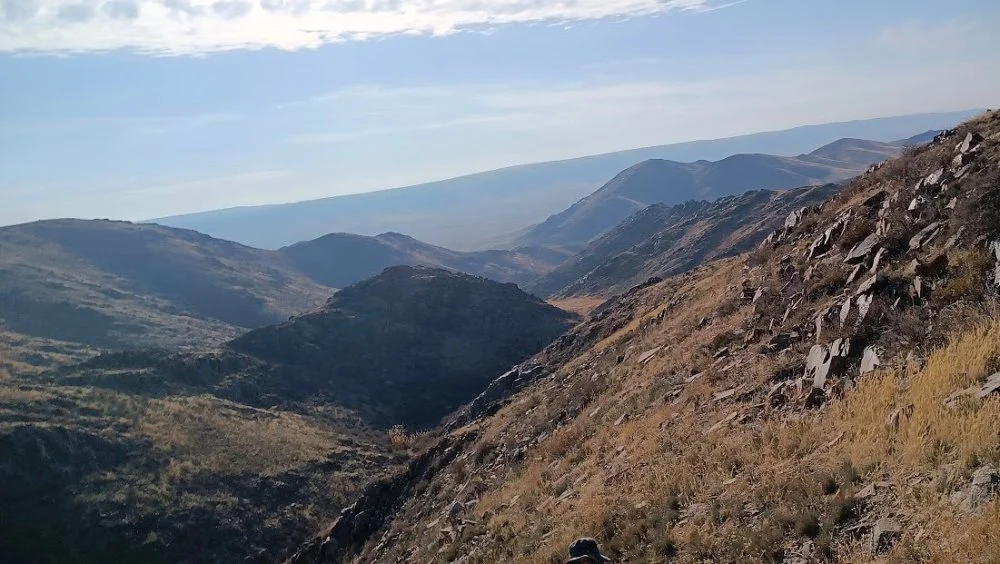The Sun Argali
A Great Celestial Journey

Argali-Sun/Olga Gumirova
The rocks on this hill in the center of the Ordakul Sanctuary in the Dauylbai Mountains of the Jetisu region are mostly dark brown or gray. Their surfaces, covered with a dark patina, seem almost black, as if they were tanned. In only one place, on the southern slope, is a low, light brown bulwark with a pinkish tinge.
In the rays of the setting sun, one of its planes takes on a rich, almost red color. In the Bronze Age, about 4,000 years ago, ancient artists and shamans carved a picture on it that can be considered a masterpiece of ancient art.

At sunset, the rock with the argali becomes almost red/Olga Gumirova
The petroglyph was documented at the end of October 2024 as a part of the effort to record the archeological monuments of Dauylbai ridge, Jetisu, during an expedition led by Alexander Goryachev, chief researcher of the Alkey Margulan Institute of Archeology, and assisted by the scientific volunteers of Petroglyph Hunters. Specialists have not yet had a chance to fully interpret this scene, so there is only a preliminary hypothesis regarding its meaning.

Petroglyph hunter Anel Aybasova with a scene she found on the slope of a hill/Olga Gumirova
In all likelihood, the rock of the Ordakul sanctuary probably depicts a mythological image of the world with the argali, or mountain sheep, at its center, as a symbol of the sun and prosperity. Its size and importance are emphasized by the shining rays.
The argali, also called kachkar, is a cloven-hoofed animal of the Bovidae family that lives in the high mountains of Kazakhstan. It is also found in Mongolia, Kyrgyzstan, Russia, Uzbekistan, and some other countries. It is one of the most common symbols in Eurasian petroglyphs, confirming the assumption about the existence of a cult of sacred animals in ancient Kazakhstan.

Sacred Argali/Olga Gumirova
Many nations associate the argali with the sun, and this analogy is not accidental; this strong and graceful animal lives high in the mountains among inaccessible rocks and is closer to the sky and the sun than any other living creature.
According to scholars, sun worship became widespread in the Bronze Age (2000–800 BCE) and was, as evidenced by written sources, practiced by the Sakas and Scythians. The journey of daylight across the sky is symbolically represented as the journey of a sacred animal—which could be an argali, a deer, an elk, or a mountain goat—from morning to night.

Ordakul Shrine/Olga Gumirova
The fact that the image of the argali had a special sacral meaning is proved by hundreds of petroglyphs in various groups in Kazakhstan as well as numerous finds in Bronze Age burials and Saka mounds, including a skillfully made figure of the animal decorating the top of the headdress of the Golden Cataphract Warrior from the Issyk kurgan.
Interestingly, according to the locals, there were once argali in the Dauylbai Mountains. Perhaps an ancient artist ‘painted’ a portrait of one from observing it in real life and turned it into a symbol of the sun, which always gives warmth and hope.

Burial ground on the crest of a hill with petroglyphs/Olga Gumirova



